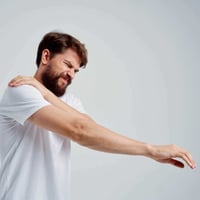A total hip replacement (THR) is a common and highly effective surgery for individuals dealing with...
Your Guide to Recovering From An ACL Tear

An ACL tear is one of the most common and serious knee injuries, often occurring during high-impact sports, sudden movements, or awkward landings. Whether you’re an athlete or someone who suffered an accidental injury, recovering from an ACL tear requires proper treatment, rehabilitation, and physical therapy to regain strength and mobility. In this guide, we’ll walk you through the recovery process, the role of physical therapy near you, and what you can do to optimize your healing.
What is an ACL Tear?
The anterior cruciate ligament (ACL) is a crucial stabilizing ligament in the knee. ACL tears commonly occur due to:
-
Sudden stops or direction changes
-
Landing awkwardly from a jump
-
Direct impact to the knee (common in contact sports like football or basketball)
-
Twisting motions while the foot is planted
Symptoms of an ACL tear include:
-
A loud “pop” sound at the moment of injury
-
Severe pain and immediate swelling
-
Instability and difficulty bearing weight
-
Limited range of motion
For a more in-depth understanding of ACL injuries, check out this Mayo Clinic ACL Overview.
Treatment Options for an ACL Tear
1. Non-Surgical Approach In some cases, especially for individuals with a partial ACL tear or those who have lower physical activity levels, non-surgical treatment combined with physical therapy may be sufficient.
2. Surgical Approach For athletes or individuals with complete ACL tears, ACL reconstruction surgery is often required. Surgery involves replacing the damaged ligament with a graft from your hamstring, patellar tendon, or a donor tendon.
Regardless of the approach, physical therapy is essential for rebuilding knee strength, improving stability, and regaining full function.
The Role of Physical Therapy in ACL Recovery
Whether you opt for surgery or conservative management, physical therapy near you is a critical component of recovery. A skilled physical therapist in NYC or your local area can guide you through each stage of rehabilitation:
Phase 1: Early Recovery (0-6 Weeks)
-
Reduce swelling and pain with ice, compression, and elevation
-
Gentle range-of-motion exercises
-
Strengthening surrounding muscles (quads, hamstrings, glutes)
-
Weight-bearing progression as tolerated
Phase 2: Regaining Strength & Stability (6-12 Weeks)
-
Progressive strengthening exercises
-
Balance and proprioception training
-
Functional movements (mini squats, lunges)
-
Gradual return to low-impact activities
Phase 3: Advanced Strength & Sport-Specific Training (3-6 Months)
-
Plyometric and agility drills
-
Controlled jumping and landing mechanics
-
Running progression
-
Sport-specific movements and neuromuscular control exercises
Phase 4: Return to Sport or Full Activity (6-12 Months)
-
Testing knee strength and function
-
Full-speed agility, sprinting, and cutting drills
-
Gradual return to high-impact activities
Studies show that returning to sport too soon increases the risk of re-injury. Your physical therapist in Manhattan, Brooklyn, or Queens will perform functional assessments to determine when you are ready to resume full activity.
At-Home Recovery Tips
While professional physical therapy is essential, you can also support your recovery with these at-home strategies: ✅ Follow your therapist’s exercise program consistently ✅ Use ice and elevation to reduce swelling ✅ Prioritize good nutrition for tissue healing ✅ Stay committed to strengthening and mobility work ✅ Wear a knee brace if recommended
Finding the Best Physical Therapy for ACL Recovery
Looking for the best physical therapy near you to recover from an ACL tear? MotionSync connects you with highly qualified physical therapists in NYC, Manhattan, Brooklyn, and Queens who specialize in post-surgical and non-surgical ACL rehabilitation.
Don’t let an ACL injury keep you sidelined—start your recovery today!




